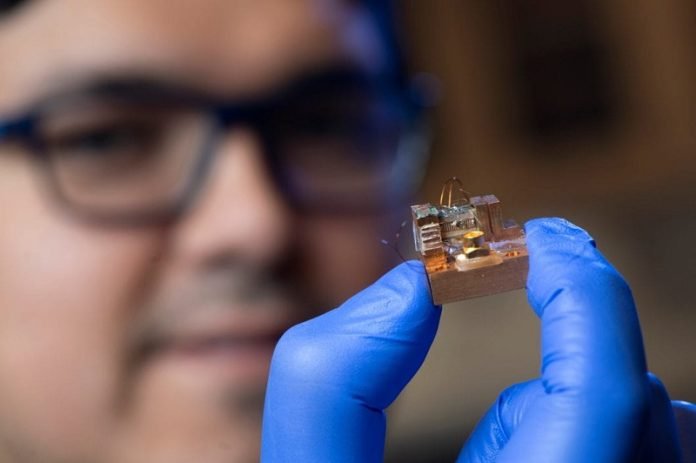
In a groundbreaking study from the University of California, Irvine, and Los Alamos National Laboratory, scientists have discovered a way to transform ordinary materials like glass into quantum materials, which could play a crucial role in developing quantum computers.
Published in Nature Communications, this research opens up new possibilities for the future of technology.
Quantum computers are seen as the next big leap in computing, promising to surpass the limitations of today’s conventional computers.
Unlike current technology that relies on silicon for conducting electricity, quantum computers operate on the principles of quantum mechanics, enabling them to solve complex problems much faster.
Professor Luis A. Jauregui from UCI, who led the study, explains that the materials they’ve created show unique electrical properties because of their special atomic arrangements.
“It’s like turning glass, which normally doesn’t conduct electricity, into a material that can conduct electricity as well as copper does,” he says. This transformation is revolutionary because it means that materials considered to be poor conductors can now be turned into efficient ones.
The secret behind this transformation lies in applying a specific kind of strain to the materials at the atomic level.
The research team developed a unique tool called a “bending station” to apply this strain and change the atomic structure of a material known as hafnium pentatelluride. This process turns it from an ordinary material into one that’s suitable for use in quantum computers.
By “poking holes” in the atomic structure through strain, the team can effectively change how the material behaves. This process is not only reversible but can be turned on and off, making it possible to create a switch for a quantum computer.
The collaboration between experimental observations and theoretical simulations was a key aspect of this research. Co-author Ruqian Wu highlights the importance of this partnership in accelerating the discovery of new methods to control quantum states in materials.
This collaboration showcases the power of combining different areas of expertise in pioneering research.
Michael Pettes, another co-author from Los Alamos National Laboratory, expressed excitement over demonstrating that these elusive material states, crucial for quantum device development, can indeed be created.
The methodology used in this study is not limited to just one material but can be applied to explore other quantum materials as well.
This research is not just about pushing the boundaries of scientific knowledge; it’s about bringing the dream of quantum computing closer to reality. With quantum computers, tasks that currently take conventional computers years to complete could be done in seconds. However, quantum computers are still rare, found mainly in research labs of tech giants like Google and IBM.
The team’s discoveries could significantly accelerate the development of quantum computers, making them more accessible for everyday applications. Professor Jauregui hopes that their work will help fulfill the promise of quantum computing in our daily lives.
The study received support from the UCI Center for Complex and Active Materials, an NSF CAREER grant to Jauregui, and funding from the Los Alamos National Laboratory Directed Research and Development program.
It involved the hard work of UCI graduate and undergraduate students, highlighting the collaborative effort behind this innovative research.



